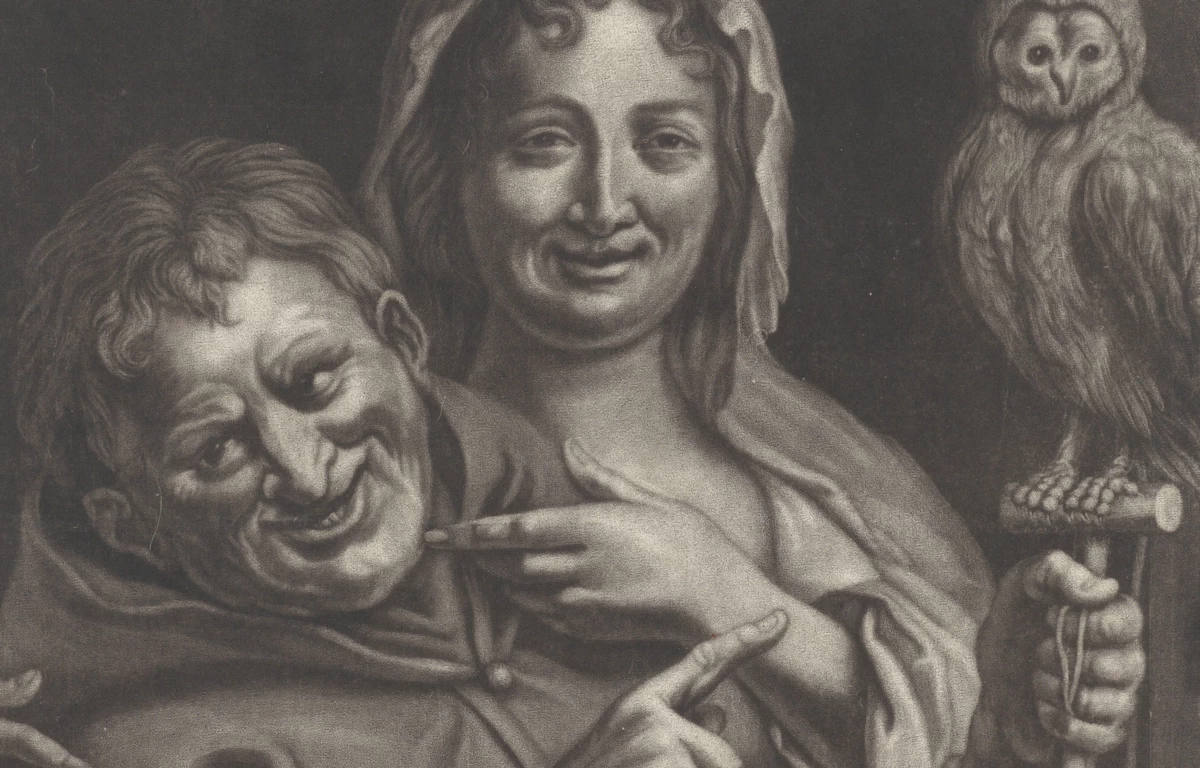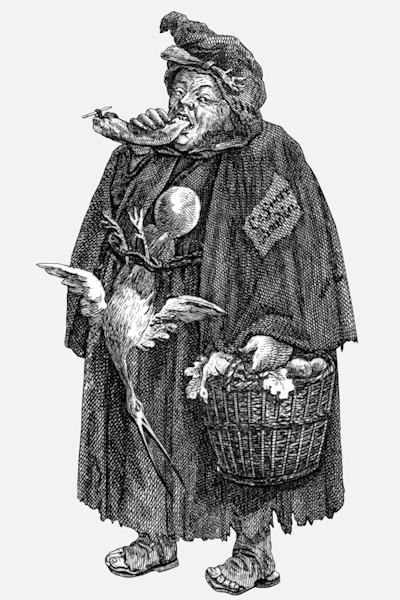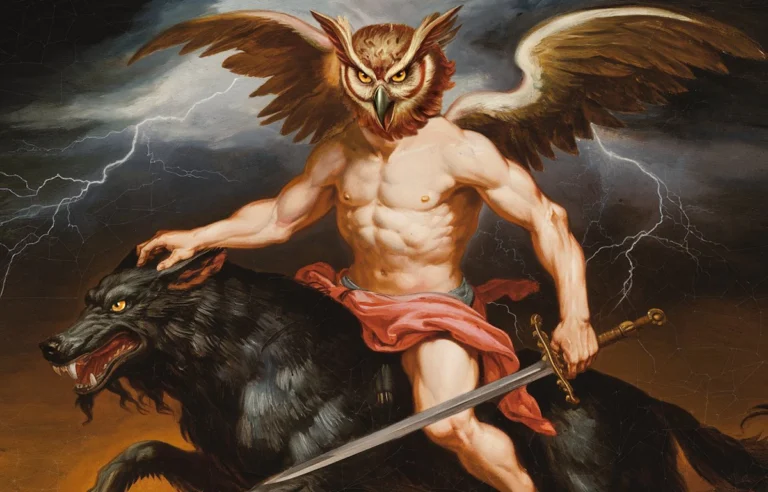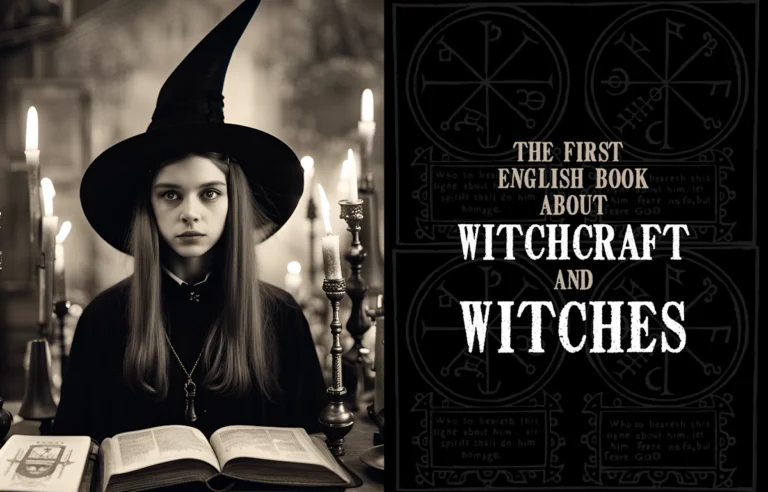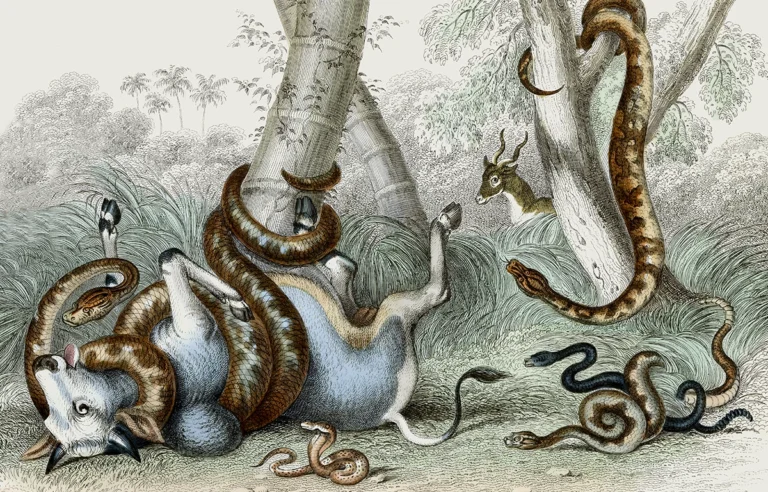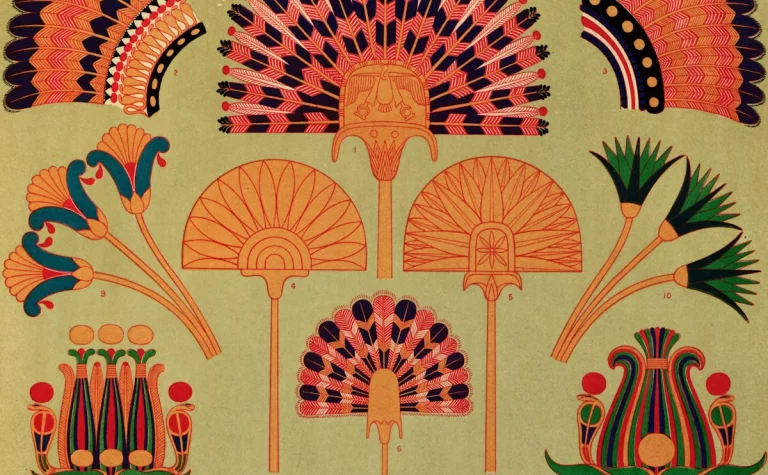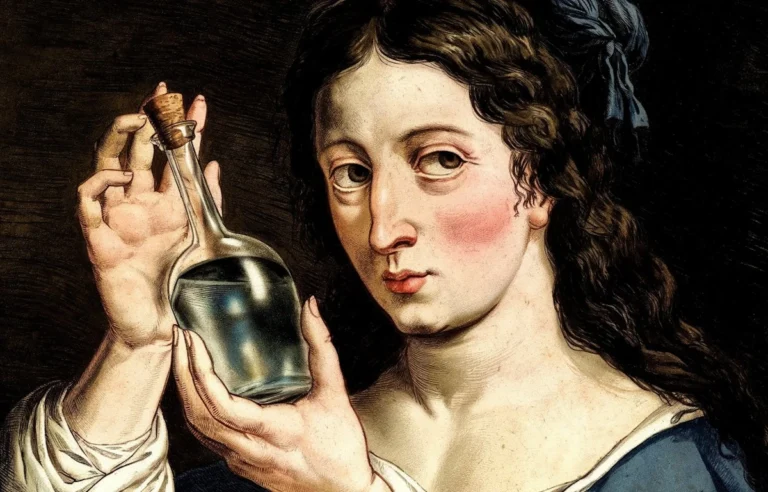Naughty Monks of the Public Domain
When you think of medieval monks, you might picture quiet guys in brown robes, slowly walking through cold stone halls, only focused on praying and living sin-free lives. But the truth is way more complicated—and a lot juicier. These “naughty monks” found plenty of ways to get into trouble, doing things that would make even the boldest sinners blush. Let’s sneak a peek behind the monastery walls to see what monks were really up to when they weren’t praying. Spoiler alert: it wasn’t all about fasting and forgiveness!
Godly Devotion... and Sinful Distractions
Monks were supposed to be the most devoted people in medieval times, spending their days in prayer and study. But in reality, they didn’t just copy holy books or help the poor—some were gambling, overeating, and even sneaking off to have affairs. Instead of being perfectly pious, they had plenty of naughty habits they kept hidden from the outside world.
Medieval art didn’t hold back when it came to showing these monks’ bad behavior. Paintings and sketches from the time often showed monks drinking, gambling, or even spending time with women they shouldn’t have been around. While some of these drawings were probably exaggerated, there’s no doubt that many monks lived far more comfortably than the peasants who lived outside their monasteries. And with that comfort came temptation.
The Drunk Monks
In medieval Europe, clean water wasn’t always safe to drink, so people, even kids, turned to beer as their go-to beverage. Monks, with their knowledge and resources, quickly became master brewers. Many monasteries were brewing beer not just for themselves, but also to sell to travelers and to share with the poor. Of course, they weren’t shy about enjoying a few pints themselves.
Beer-making wasn’t just a hobby—it was a serious business. The Benedictine abbey of Saint Gall in Switzerland, for example, had three breweries by the ninth century. Monks were perfecting their craft, experimenting with new recipes, and improving the taste. With all that beer around, drunkenness became so common in some monasteries that it led to brawls, missed prayers, and neglect of duties. Records from the time show that monks were often punished for drinking too much, but that didn’t stop them from cracking open another barrel. And it wasn’t just the occasional beer that fueled the monks’ drinking habits.
In Germany, the Paulaner monks took it a step further and created their own special brew known as doppelbock. They developed this strong, rich beer during Lent, a time when Christians were supposed to fast. Instead of eating, the monks relied on their thick, hearty beer to sustain them. They even jokingly referred to it as “liquid bread” because it was so heavy and full of calories. The monks claimed they were sticking to the rules by not eating solid food, but in reality, they were getting their fill through the drink.
Monastic beer brewing became so legendary that some of the most famous beer brands today still have connections to those old monasteries. Brands like Chimay and Westmalle are brewed by Trappist monks, continuing the tradition that goes back hundreds of years!
While beer was more common in Northern Europe, wine was a prized drink, especially among wealthier monks. In England, the monks of Westminster Abbey were known for their love of wine. At the height of their wealth, they had their own vineyard! Westminster Abbey kept massive wine cellars, and the monks held elaborate wine-tasting events that often ended with drunken revelries.
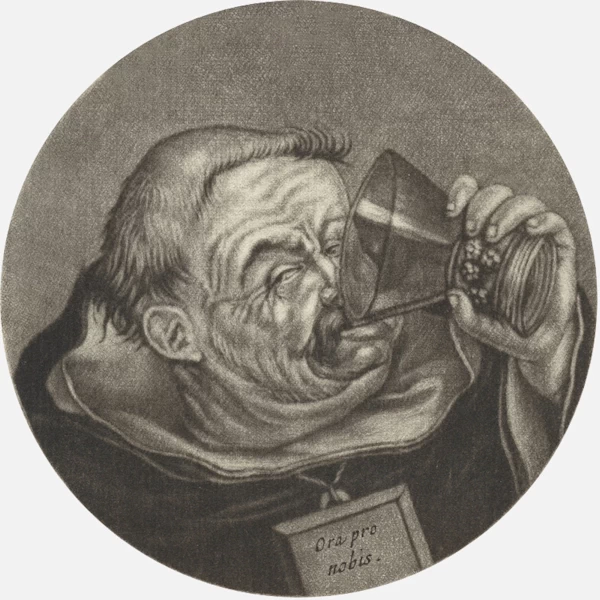
Jacob Gole (1693 – 1700)
Feast First, Pray Later
Monks were supposed to live simple, modest lives, but many had a hard time sticking to that promise when it came to food. Even though their religious rules tried to keep their diets in check—like allowing only one meal a day or banning meat on certain days—monks were pretty clever at finding loopholes. For instance, when they couldn’t eat meat from four-legged animals, they happily gobbled up birds, which were considered “exempt from the rules”. Some monks even went so far as to claim that barnacle geese were actually plants because they thought the geese grew out of barnacles.
One particularly lavish example of monastic feasting comes from the Abbey of St. Denis in France. Known for its wealth and grand hospitality, this abbey threw some of the most extravagant feasts of the time. On special occasions, the abbey would host enormous banquets featuring multiple courses of rich dishes, including venison, game birds, and elaborate pastries. These feasts were not just about satisfying hunger; they were displays of wealth and power.
In Spain, the Monastery of San Pedro de Cardeña was infamous for its opulent meals. During the Middle Ages, the monks there were known to host sumptuous feasts that lasted for days. These events were so grand that they attracted attention from all over the region. Not only did the monks indulge in vast quantities of food and drink, but they also showcased extravagant table settings and entertainment. It wasn’t unusual for these feasts to include live music and performances, adding to the spectacle. The excesses were so extreme that they became the stuff of local legend and criticism.
Monastic feasts often showed a side of monk life that was anything but humble. While they preached modesty, their elaborate meals and indulgent behavior highlighted the gap between their teachings and their actions. This excess didn’t just make life inside the monastery grand; it also fueled resentment among the common people who saw the monks living in luxury while they struggled with scarcity.
Lust in the Cloisters
The secluded life in the monastery, combined with a strict set of rules, sometimes led to some rather unholy behavior.
Monks took a vow of celibacy, meaning they promised not to marry or have any romantic relationships. But let’s face it—keeping that vow was often easier said than done. Many monks struggled with their desires and found themselves caught up in scandals that broke their vows in spectacular ways.
One of the most famous tales of monastic lust involves Peter Abelard, a monk who fell head over heels for his student, Héloïse. Their passionate affair was scandalous enough to make waves throughout the church. When Héloïse became pregnant, Abelard was forced into a drastic punishment: he was castrated. Their story is a dramatic example of how difficult it was for some monks to adhere to their vows. Abelard’s tale isn’t just famous for the scandal; it also highlights the complex interplay between religion and human desires.
Another notorious case comes from the abbey of Cluny in France. This abbey was renowned for its wealth and influence, but it was also infamous for the misconduct of its monks. The abbey was a hotbed of scandalous behavior, including sexual misconduct. It was an open secret that many monks at Cluny engaged in affairs, both with women and other men. The lax enforcement of rules at Cluny meant that these issues were often overlooked, leading to widespread gossip and criticism from outsiders. The abbey’s reputation suffered, and it became a symbol of the church’s struggle to manage its own corruption.
Some historians believe that the tradition of “confession” in the church was partly developed to manage these kinds of scandals. By encouraging monks and other church members to confess their sins regularly, the church hoped to keep track of and control the misbehavior within its ranks. It was a way to deal with the sins of the flesh in a more structured manner, though it often did little to completely curb the issue.
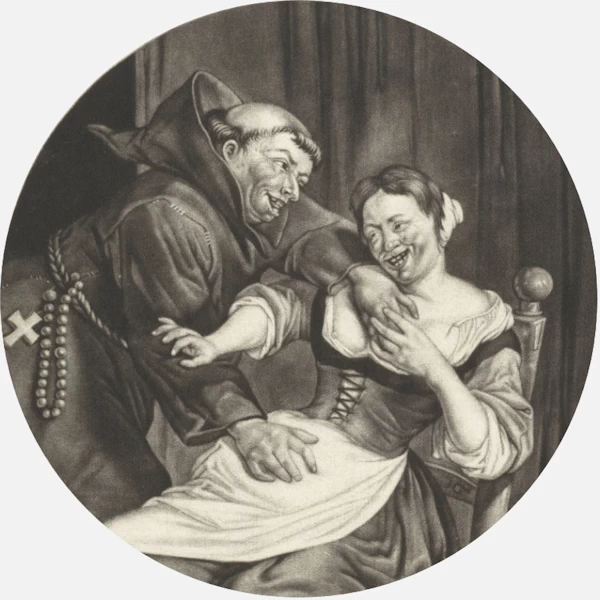
Cornelis Dusart (1670-1704)
The Gamble of Monastic Life
Gambling might seem like a pastime reserved for taverns and shady back alleys, but it was also a sneaky problem in many medieval monasteries. Despite the church’s clear stance against games of chance, many monks found it hard to resist the thrill of a bet. And when monks did gamble, they often lost big, squandering money that was supposed to be used for maintaining their abbeys or helping the poor.
One famous example comes from the 12th-century Benedictine monastery of Saint-Denis in France. The monks there were known for their love of gambling, particularly dice games. Their gambling habits became so notorious that it started to interfere with their religious duties. They were caught in a cycle of betting away their money and then struggling to make ends meet. The situation became so problematic that the church had to intervene and implement strict rules to curb their gambling habits.
In England, the Cistercian monks of Fountains Abbey also had their share of gambling troubles. During the 13th century, records show that these monks were frequently caught playing dice and cards, leading to significant financial losses. The gambling habits became a point of contention within the monastery, and efforts to stop it were often met with resistance. The situation was so bad that it affected the abbey’s finances, leading to disputes and tensions among the monks.
The medieval gambling problems of monks were so well-known that they even inspired some of the era’s literature. Geoffrey Chaucer’s The Canterbury Tales includes characters like the Pardoner, who’s depicted as a gambling addict and a trickster. Chaucer’s tales were based on real-life issues within the church, and the gambling monks he wrote about were a reflection of the widespread vices that plagued monasteries at the time.
The Church Strikes Back
The Catholic Church wasn’t blind to what was going on inside its monasteries. When monks were caught breaking their vows, the church took action. The punishments ranged from public shame to being kicked out of the monastery entirely. Some monks were even thrown in prison if their behavior was especially bad.
A famous example comes from St. Mary’s Abbey in York during the 16th century. Investigators found that many of the monks were guilty of gluttony, drunkenness, and sexual misconduct. The abbot, or leader of the monastery, was kicked out, and the guilty monks were thrown in jail. This case showed that the church was willing to clean up its messes when things got out of control.
To keep monks in line, the church sent inspectors to monasteries to check up on them. These visits were supposed to make sure monks were following the rules, but some monasteries got pretty good at hiding their misbehavior before the inspectors arrived. Talk about sneaky!
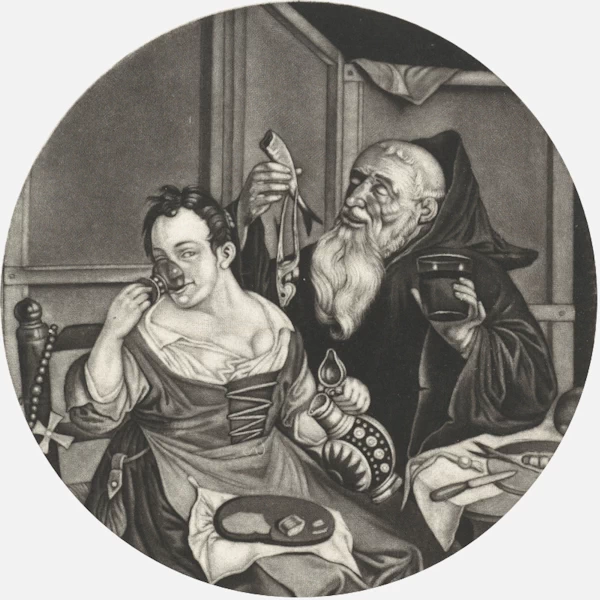
Cornelis Dusart (1670-1704)
Conclusion: Saints and Sinners
While many monks truly wanted to live holy lives, a lot of them got caught up in sin. Their story is a reminder that no one is perfect—not even those who dedicate their lives to God. It shows us that the struggle between right and wrong has always been part of the human experience. Whether in a medieval monastery or in today’s world, resisting temptation is no easy task. So next time you hear a story about monks misbehaving, just remember—they were battling the same challenges we all face, albeit in their own rather unique way!
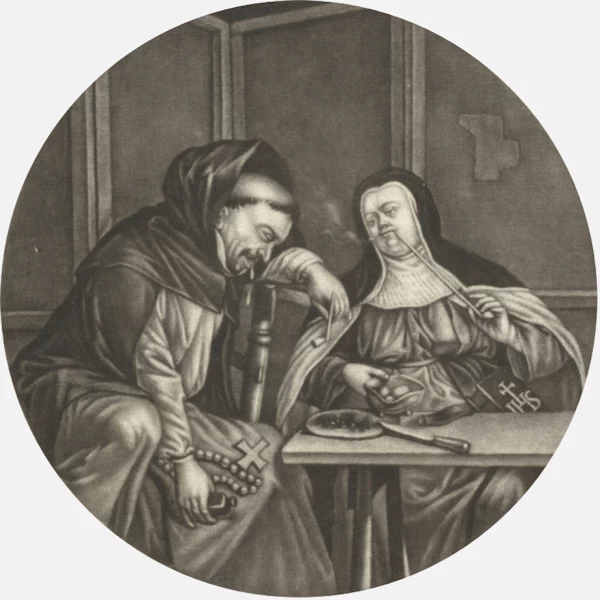
Cornelis Dusart (1670 – 1704)


